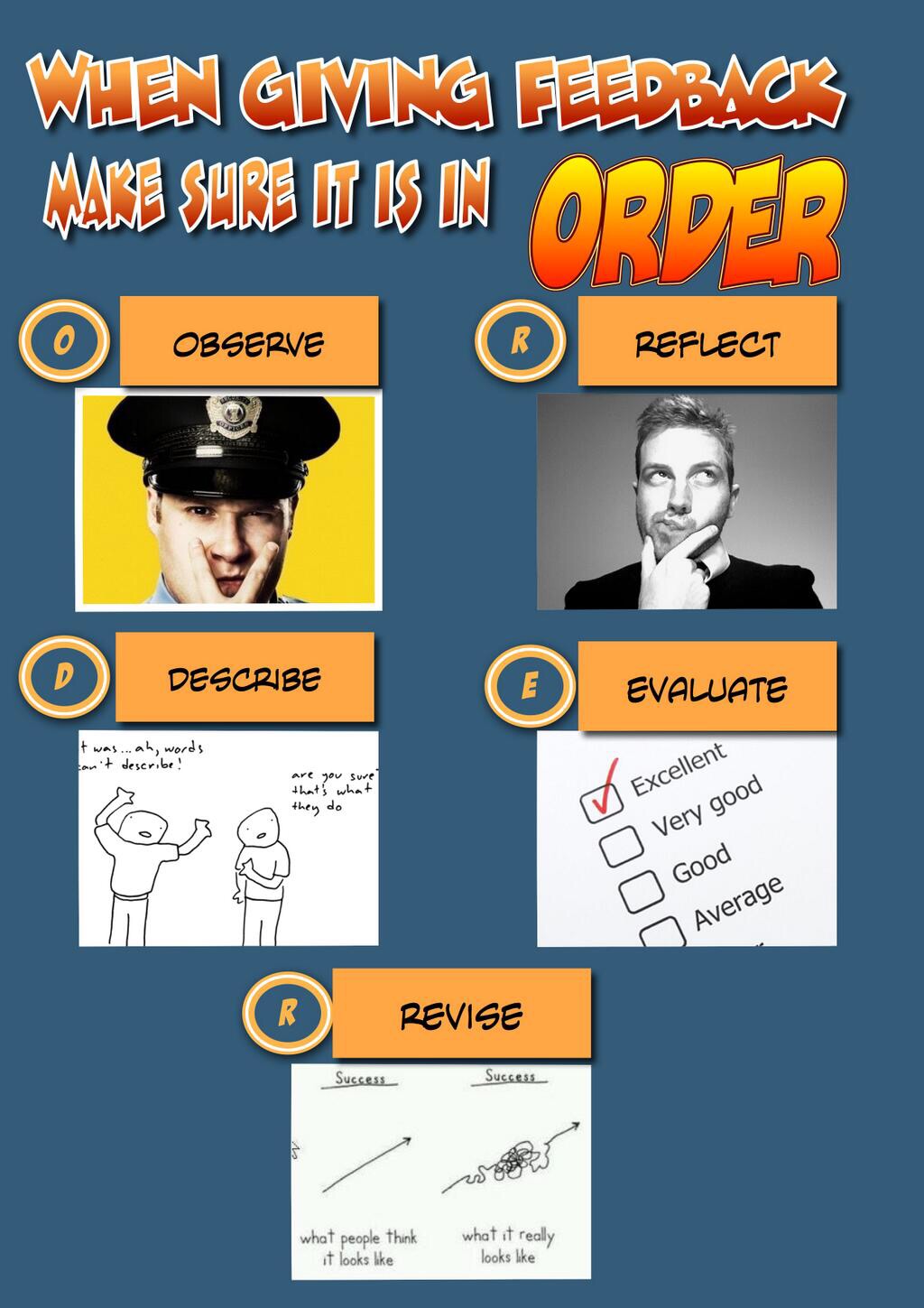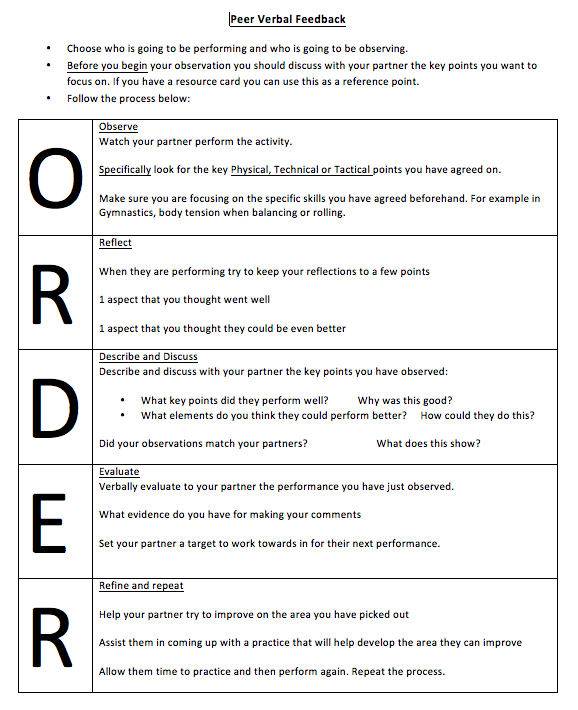This year I’m focusing on improving peer verbal feedback within my classroom. You can read my back ground reading and preparation here and here. I believe being able to verbalise performance is key to improving Physical Education. Movement and talking about movement go hand in hand. Teacher verbal feedback is hugely important to help students progress within PE. However If I could create an environment where every student is willing to engage with their peers verbally about how to improve each other’s performance, it will make my job far easier. I also think it will have a much bigger impact on student confidence and competence within my subject. However I need to ensure clarity and accuracy of feedback is high and that students are happy and comfortable to do this.
I have decided to focus on my Year 8 PE Class. The unit of work I’m going to look at developing peer verbal feedback in is Gymnastics. Before the unit of work began I got the class to fill in a very basic Verbal Feedback Questionnaire with regards to their confidence in giving, receiving and implementing verbal feedback.
Here are the class results:
The key areas for me, to help improve the quality and accuracy of peer verbal feedback, are giving structure to their verbal feedback, building student confidence, improving student vocabulary and helping students understand how to offer a ‘next steps’ to their partner. I would hope that by the end of the unit of work I have improved the confidence of my students in this area, and that it has had a potential impact of their gymnastics performance.
The overall aim of the Year 8 unit of work for gymnastics is for students to perform a floor sequence. Usually I would allow a lot of freedom and give students plenty of feedback on their performance. I wanted to spend most of my teaching time on helping develop their feedback so I took the decision to plan a basic sequence for them to perform. Here it is:
Students are then able to replace any of the agilities they find too hard or too easy with a similar one. For example number 1 is a diving forward roll. I have a number of students who are unable to forward roll and they have replace this with a roll they can perform such as a log roll or a teddy bear role. They had 2 lessons to learn their routine be able to perform it solo. They learn it, reciprocally, in pairs. I give verbal feedback constantly, mainly focusing on the performance of specific agilities. At the end of the second lesson I recorded all their performances. I did this via 6 iPads. When students were happy to perform they had a peer video their performance. I then ask them to give verbal feedback on others performances, which I also recorder via the iPads.
This is the level of verbal feedback:
The feedback, for a first attempt is good, but doesn’t help the performer to improve their performance. It is clear that I need to help students have structure when giving verbal feedback, I need to model what good feedback sounds like and also develop their vocabulary (I’m pretty sure ‘gymnasticky’ isn’t a real word)
A few years ago in the department we developed a model for students to give verbal feedback. This is it:
We were quite please with it as it spelt an acronym and we could constantly say to classes who were giving verbal feedback, ‘make sure you put your feedback in ORDER.’ However what we didn’t do is teach students how to do that or make the structure a little more explicit. I want my students to be confident in judging the performative aspects of my subject. We as PE teachers are always creating opportunities for performance, we also need to ensure pupils are given opportunities to verbalise and judge those performances. Therefore a colleague of mine, within the department, took this to our student sports council meeting to develop further. They took the challenge quite serious, and after an hour of discussion this is what our students came up with:
At the beginning of the next lesson I will give them back their grades for their performance. I will explain they have another 2 lessons to improve their performance, but they will only be able to do this via peer verbal feedback. Over the course of those two lessons I will model what good verbal feedback is, teach them a structure of giving verbal feedback, develop their vocabuarly and try to build an environment where they begin to do this naturally without my support. I want to create dialogue of peer to peer support, judgement and assessment, that is at all time positive and working towards improvement.
However the key is, what do students do with that feedback. There is no point spending time improving student peer feedback, if their peers then don’t implement it to move their own learning or performances forward. Whatever the standard of the feedback my students deliver I want it to be productive.
Once again any advice on my TLC project and how to improve peer verbal feedback within Physical Education lessons would be much appreciated.





Reblogged this on The Echo Chamber.
LikeLike
Great posts and certainly a good area to look at. I enjoy the use of the whole process as it has great power, if used correctly.
Pros – pupils able to give feedback to peers in their own words and helps understanding
– pupils receive more feedback through a lesson then what a teacher can do
– process is ongoig
– if modelled correctly, the feedback to peers not only helps them but clarifies understanding for the person giving the feedback
– challenges pupils in different ways and develops communication
Cons – can have a negative effect if not modelled correctly. All the school I’m at use WWW/EBI
– feedback might not be as technical due to lack of vocabulary
– less confident pupils might struggle in situation.
LikeLike
Thanks for reading and commenting Connor. I really like the http://www.ebi model to help students give feedback. Its a very clear and simple way to introduce what sorts of things you can offer in verbal feedback. What it doesn’t offer is ‘next steps’. If feedback isn’t able to clearly inform someone not only how they can improve, but what they can do to improve then i feel it can be meaningless at times. The pupil receiving the feedback needs to do something with it, usually something that is more work/effort than the person who has been observing and giving the feedback. Feedback needs to result in an action plan or practice for improvement. This is the area that I want to work on with students.
LikeLike